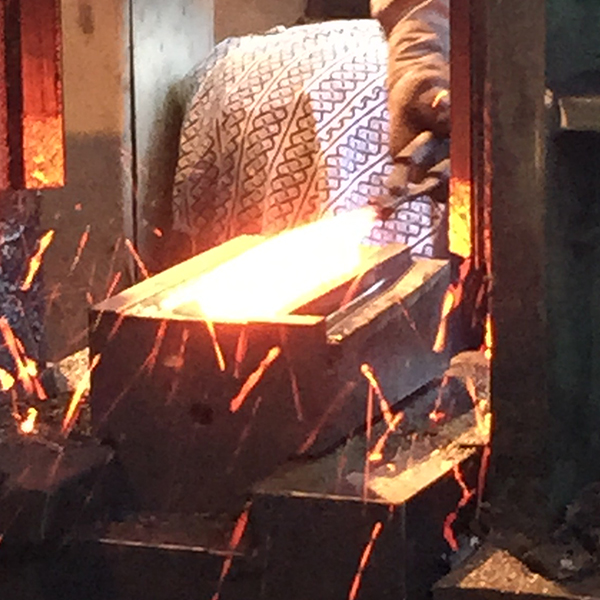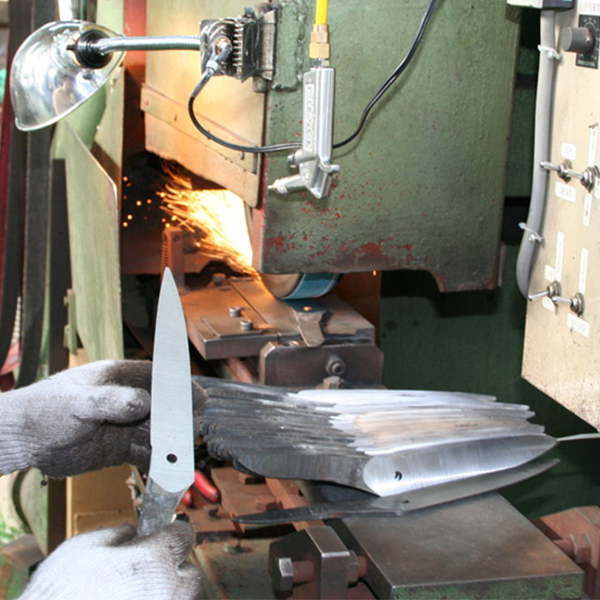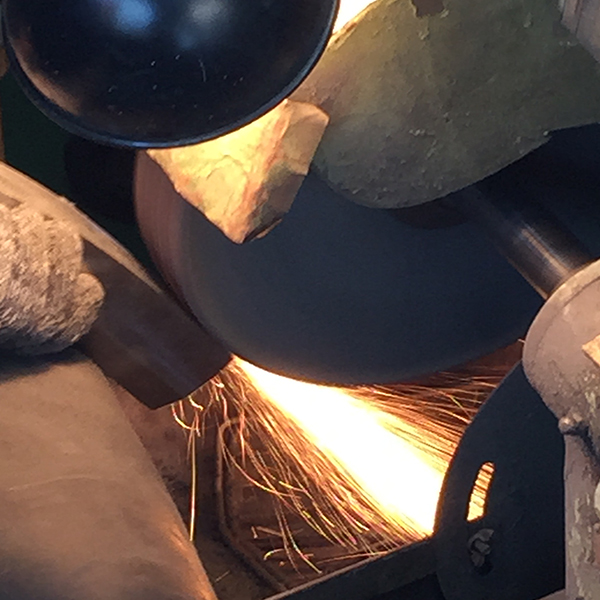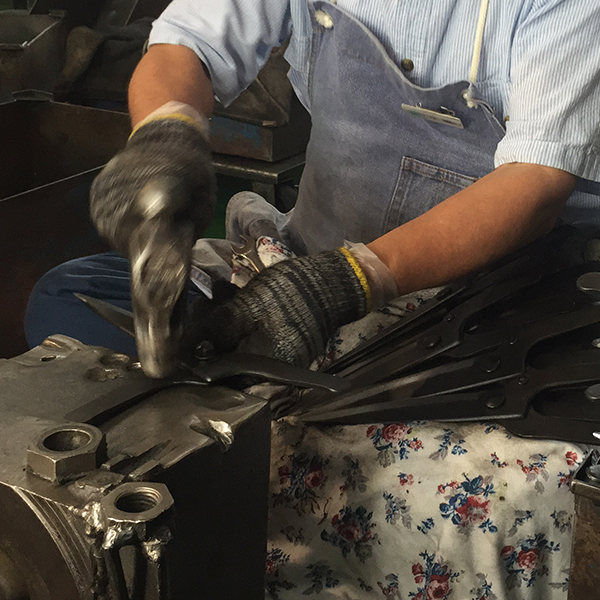Yasuki Hangane, carbon steel suitable for use in blades and other tools.
About our blade steel
Broadly speaking there are three main types of steel: Carbon steel, such as Shiro-kami and Kigami; Alloy steel and Stainless steel. White paper and Yellow paper (matching SK-5 in JIS – Japanese Industrial Standard) are pure carbon steel with impurities reduced to the lowest amount achievable. They are therefore, an ideal steel from which to craft sharp blades while also being easy to grind if forged and heat treated properly. Blue paper (Matching SJS-93 in JIS) on the other hand, is a carbon steel (White paper and Yellow paper) to which tungsten and chromium have been added. The resulting material exhibits greater heat and abrasion resistance; making it a great choice for making strong durable blades. Containing chromium, for greater toughness, tungsten, for greater hardness, and the carbon compound: alloy carbide, makes it an ideal choice of high carbon steel if sharpness and abrasion resistance are required. *Hitachi Metals, Ltd. holds the trademark for White paper, Yellow papar, and Blue paper.
Clad steel(Hagane tsuke)・Stamped forging ・Die cut casting
Hagane tsuke is a Japanese forging technique that creates a strong base from which to forge capable blades. This process, including the forging in fire, is an im-portant step in the manufacture of our high quality products.
Tretching steel for handles
After forging, the steel tang is stretched to accommodate the handle. Wooden or aluminum handles can be easily attached to the tang.
Process for fastening screws and rivets
Hedge shears are held together using either screws or rivets. This step of the pro-cess creates the hole required for that.
Heat treatment
Heat treatment tempers the steel, altering the structure to achieve a much greater degree of hardness and toughness. Heat treatment requires delicate skill. Each part of the blade must be heated to the correct temperature and then the entire blade must be quenched immediately.
Straightening before polishing
Blades often warp during the quenching step of heat treatment. In this step we straighten out the material.
Polishing the cutting edge/ Back of the blade
In this step the back of the blade is shaped into a subtle curve, so that it can move smoothly as part of the finished product. This step can only be accomplished by an experienced and dedicated craftsman.
Adjusting cutting edge /back of the blade
In the finial edging method the craftsmen adjust both the cutting edge and back of the blade.
Assembly/ Adjustment
This delicate step requires a human hand and continues to resist all attempts to au-tomate it. Our craftsmen using only a hammer and their intuition transform the blade into the correct ergonomic shape. Such work requires years of practice and is a vivid demonstration of their skill and expertise.

Forging process

Heat treatment

Polishing

Finishing
